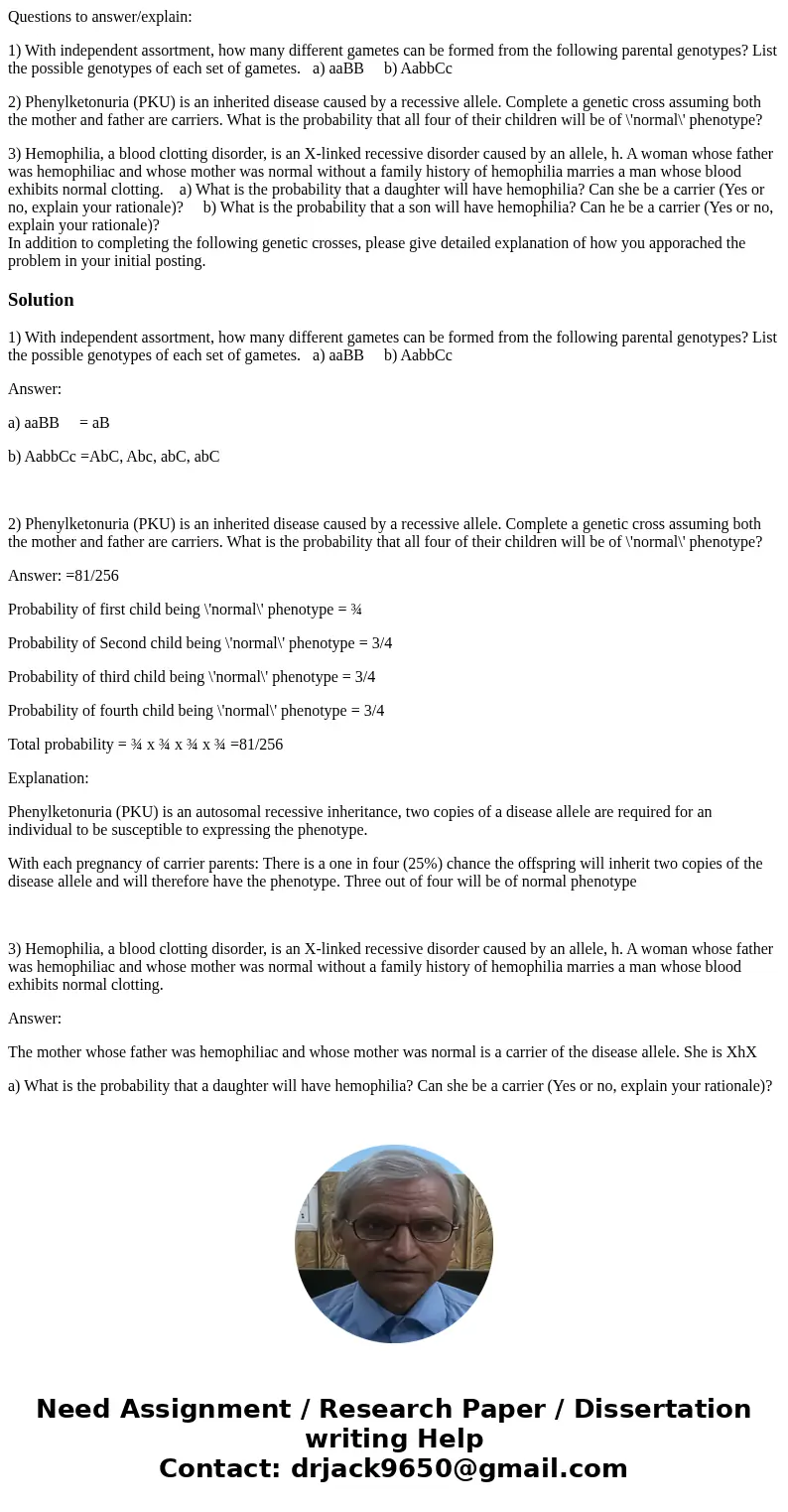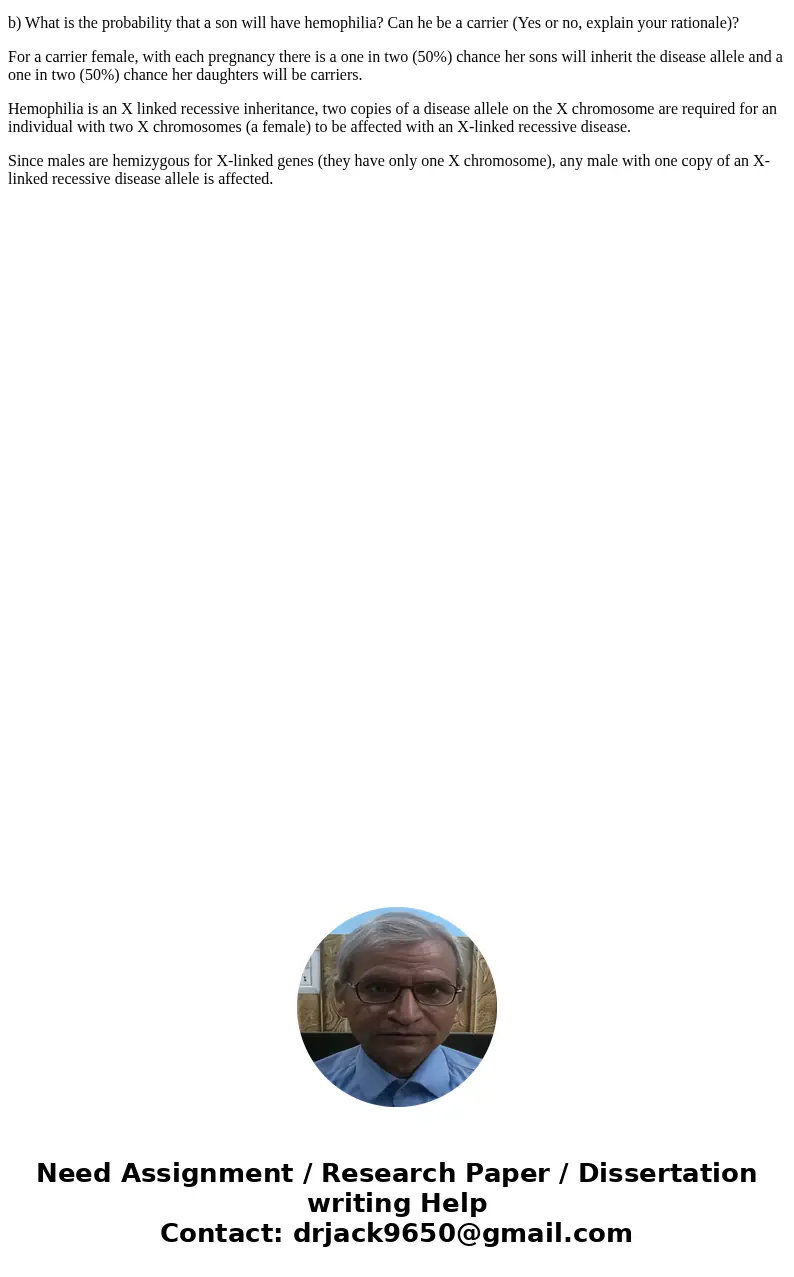Questions to answerexplain 1 With independent assortment how
Questions to answer/explain:
1) With independent assortment, how many different gametes can be formed from the following parental genotypes? List the possible genotypes of each set of gametes. a) aaBB b) AabbCc
2) Phenylketonuria (PKU) is an inherited disease caused by a recessive allele. Complete a genetic cross assuming both the mother and father are carriers. What is the probability that all four of their children will be of \'normal\' phenotype?
3) Hemophilia, a blood clotting disorder, is an X-linked recessive disorder caused by an allele, h. A woman whose father was hemophiliac and whose mother was normal without a family history of hemophilia marries a man whose blood exhibits normal clotting. a) What is the probability that a daughter will have hemophilia? Can she be a carrier (Yes or no, explain your rationale)? b) What is the probability that a son will have hemophilia? Can he be a carrier (Yes or no, explain your rationale)?
In addition to completing the following genetic crosses, please give detailed explanation of how you apporached the problem in your initial posting.
Solution
1) With independent assortment, how many different gametes can be formed from the following parental genotypes? List the possible genotypes of each set of gametes. a) aaBB b) AabbCc
Answer:
a) aaBB = aB
b) AabbCc =AbC, Abc, abC, abC
2) Phenylketonuria (PKU) is an inherited disease caused by a recessive allele. Complete a genetic cross assuming both the mother and father are carriers. What is the probability that all four of their children will be of \'normal\' phenotype?
Answer: =81/256
Probability of first child being \'normal\' phenotype = ¾
Probability of Second child being \'normal\' phenotype = 3/4
Probability of third child being \'normal\' phenotype = 3/4
Probability of fourth child being \'normal\' phenotype = 3/4
Total probability = ¾ x ¾ x ¾ x ¾ =81/256
Explanation:
Phenylketonuria (PKU) is an autosomal recessive inheritance, two copies of a disease allele are required for an individual to be susceptible to expressing the phenotype.
With each pregnancy of carrier parents: There is a one in four (25%) chance the offspring will inherit two copies of the disease allele and will therefore have the phenotype. Three out of four will be of normal phenotype
3) Hemophilia, a blood clotting disorder, is an X-linked recessive disorder caused by an allele, h. A woman whose father was hemophiliac and whose mother was normal without a family history of hemophilia marries a man whose blood exhibits normal clotting.
Answer:
The mother whose father was hemophiliac and whose mother was normal is a carrier of the disease allele. She is XhX
a) What is the probability that a daughter will have hemophilia? Can she be a carrier (Yes or no, explain your rationale)?
b) What is the probability that a son will have hemophilia? Can he be a carrier (Yes or no, explain your rationale)?
For a carrier female, with each pregnancy there is a one in two (50%) chance her sons will inherit the disease allele and a one in two (50%) chance her daughters will be carriers.
Hemophilia is an X linked recessive inheritance, two copies of a disease allele on the X chromosome are required for an individual with two X chromosomes (a female) to be affected with an X-linked recessive disease.
Since males are hemizygous for X-linked genes (they have only one X chromosome), any male with one copy of an X-linked recessive disease allele is affected.


 Homework Sourse
Homework Sourse